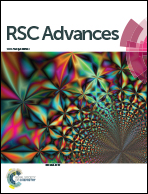Formation potential of N-nitrosamines from soluble microbial products (SMPs) exposed to chlorine, chloramine and ozone
Abstract
Soluble microbial products (SMPs) are an important component of effluent organic matter in wastewater treatment. This study investigated N-nitrosamine formation potential (NAsFP) from chlorination, chloramination and ozonation of SMPs. The results show that more NAs were formed in chloramination than chlorination and ozonation. In particular, the formation of NAs showed a good linear relationship with disinfectant dosage and bromide level, and increased with reaction time, but decreased at high temperature during chlorination, chloramination and ozonation. The effects of pH on the NAsFP were different for different disinfection methods. The pH values showed negative effects on the NAsFP in chlorination and positive effects on the NAsFP in ozonation. Yet in the chloramination study, the NAsFP showed a first increasing and then a decreasing trend. Regression procedure revealed that bromide level was the most important factor for NA formation whether for chlorination, chloramination or ozonation. The NAsFP of SMPs in the three disinfection methods was compared for synthetic and real wastewater. Five NAs were detected, and NDMA accounted for most of the NAs, accounting for more than 50%. As for reducing NAs in the effluent, ozonation was the best alternative to chlorination and chloramination, and bromide removal was the most important for chlorination, chloramination and ozonation.


 Please wait while we load your content...
Please wait while we load your content...